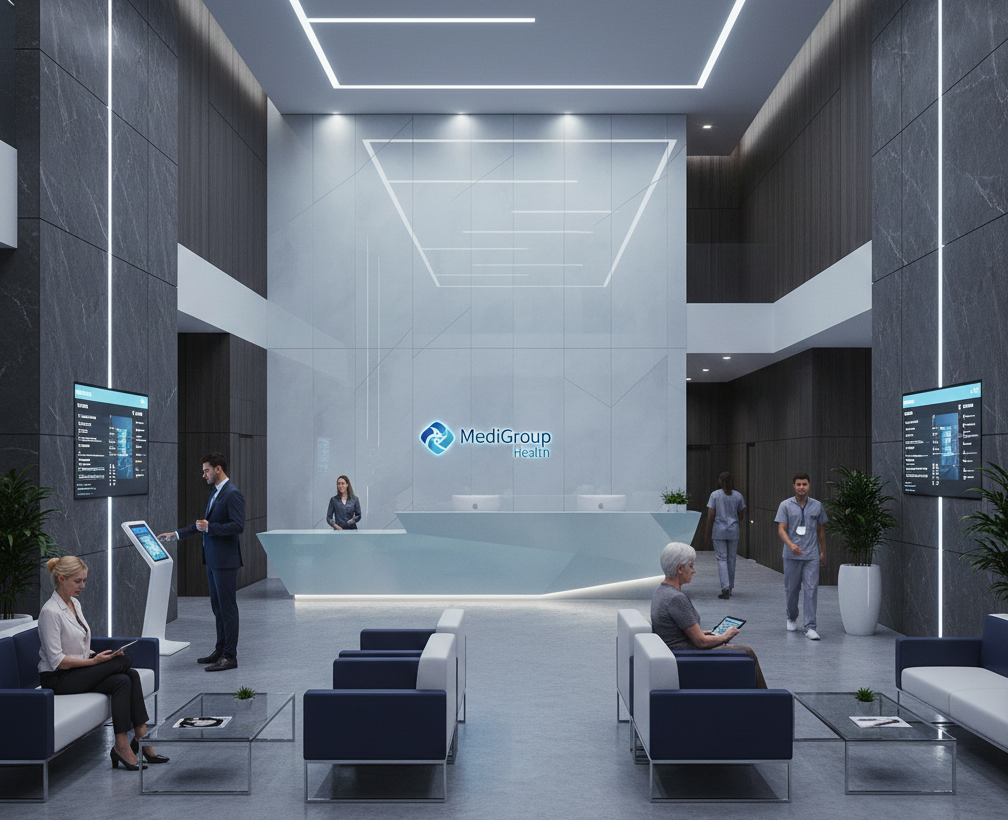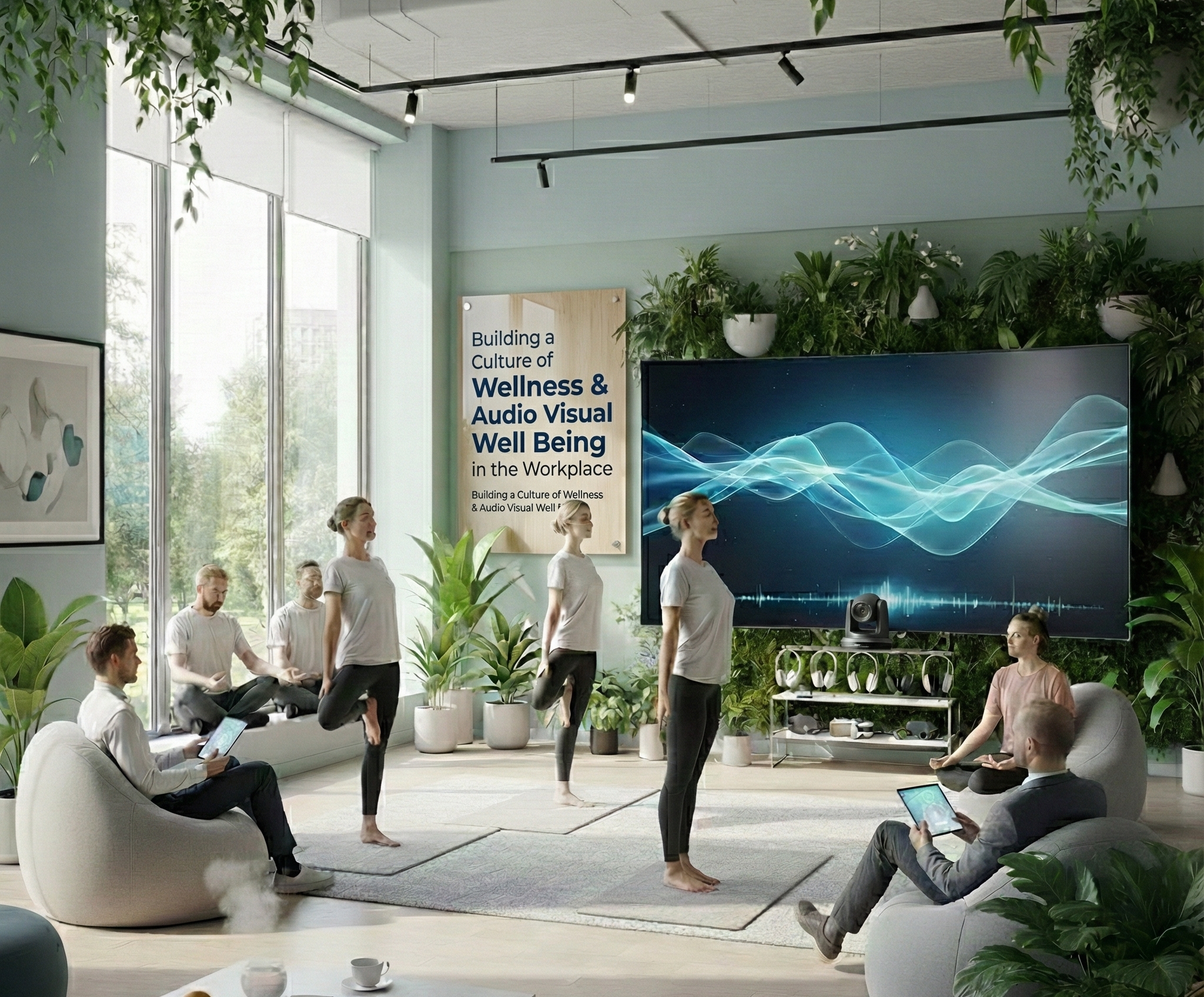Most offices focus on boardrooms. Yet daily work happens in smaller spaces. These rooms are where quick discussions, hybrid check-ins, and brainstorming sessions occur.
If your huddle rooms feel cramped, sound poor, or take too long to set up, you are not alone. Small meeting rooms often create big operational problems.
The reasons are simple and avoidable once you understand them.
The False Simplicity of Small Spaces
Smaller spaces appear easier to design. Less area, fewer devices, smaller budgets. In reality, they are more complex.
Common problems include:
- Poor acoustics that cause echo and noise.
- Disconnected BYOM (Bring Your Own Meeting) setups that waste time.
- Inconsistent technology between rooms.
- Underinvestment in AV quality.
Each problem adds friction to meetings. Teams lose focus. Collaboration slows down.
The Hidden Complexity of Small Rooms
Small rooms are not scaled-down boardrooms. They need design that considers how people meet and communicate in tight areas.
1. Acoustic Issues
Hard surfaces reflect sound. Glass walls, floors, and furniture make small rooms noisy. Background hums or outside voices interrupt meetings. Poor mic placement adds distortion.
A 10×10 room with untreated walls or the wrong mic setup can make remote participants strain to hear. Good design includes acoustic panels, sound masking, and directional microphones for clarity.
2. BYOM Overload
BYOM setups promise flexibility. Everyone connects their own devices. In practice, they often lead to confusion.
- Users switch between Teams, Zoom, and Webex.
- Cables go missing.
- Calls start late while someone fixes a display or camera.
BYOM works only when it is supported by reliable, room-agnostic integration. The system must allow anyone to plug in and start without delay.
3. Cheap Gear Creates Costly Downtime
Many businesses spend heavily on boardrooms and save on huddle rooms. Low-end cameras, microphones, and speakers seem fine at first. Then the failures start.
Poor-quality devices distort audio and video. Wi-Fi interruptions freeze calls. Every problem wastes minutes and attention. Over a week, this turns into lost productivity.
Reliable, enterprise-grade AV systems prevent these issues. They offer consistent performance, faster connections, and better sound and video quality.
4. Inconsistent Room Experience
Different meeting rooms often work differently. One uses HDMI. Another relies on wireless casting. Some have stable audio. Others do not.
Employees spend time relearning controls or asking for help. The result is frustration.
Standardized room design fixes this. When controls, interfaces, and connections are consistent across spaces, users move between rooms without delay. IT teams also find maintenance easier.
5. Poor Space Design
Small spaces need precision. Oversized screens or poorly placed tables block sightlines. Chairs scrape walls. Participants sit too close to displays.
Practical design principles help:
- Position displays at eye level.
- Use compact furniture that supports movement.
- Ensure camera angles include everyone.
- Keep surfaces clear with wireless controls.
The goal is a space that feels natural and easy to use.
How Poor Design Hurts Productivity
Bad AV design does not only waste time. It affects the communication culture.
- Teams lose focus fixing technical problems.
- Poor audio makes people disengage.
- Remote employees feel excluded.
- Hybrid meetings lose energy and purpose.
Small problems multiply. Over time, they damage efficiency and team morale.
What Effective Small-Room Design Requires
Solving small-room issues is not about adding more technology. It is about better integration.
1. Integrated AV Systems
Technology should adapt to users, not the other way around.
This means:
- Systems that support multiple meeting platforms.
- Smooth switching between wired and wireless modes.
- Cameras that auto-adjust to speakers.
- Microphones tuned for clear voice pickup.
Well-integrated systems make meetings start faster and run smoother.
2. Acoustic Treatment
Soundproofing and wall panels reduce echo. Directional microphones and noise-canceling features make voices clearer. These upgrades improve both in-room and remote experiences.
3. Standard Configurations
Every small room should feel familiar. The same layout, controls, and workflow reduce confusion and training needs. IT teams can update and monitor all systems together.
4. Human-Centered Design
The best AV systems feel invisible. The focus stays on collaboration, not controls.
Look for features like:
- One-touch or touchless activation.
- Auto-join for scheduled meetings.
- Smart lighting and sensors that adjust automatically.
- Simple wireless sharing for presentations.
When systems are easy to use, people focus on the discussion.
The Hybrid Workplace and Small Rooms
Work now extends beyond physical offices. A meeting may begin in a huddle room and continue from home or a client site.
AV solutions must bridge these locations without friction. A small meeting room must connect to a large conference space or a remote participant with the same clarity.
Resurgent designs AV systems that work across spaces and devices. Teams communicate clearly, whether in person or online.
Small Rooms, Big Value
When designed well, small rooms become the center of fast decision-making. They support quick alignment, daily updates, and hybrid teamwork.
When designed poorly, they slow everything down. Acoustics, video, and usability directly affect collaboration outcomes.
Resurgent helps businesses fix this.
How Resurgent Adds Value
Resurgent provides AV solutions for corporate environments. The company helps organizations stay agile and connected as they expand globally and adopt hybrid work.
Resurgent’s AV systems do more than improve communication. They connect people across locations and devices, making teamwork seamless.
With over a decade of experience, Resurgent delivers:
- Custom-built AV deployment plans.
- Quality control across all installation stages.
- Enterprise-level project delivery aligned with business goals.
- Scalable solutions that grow with your organization.
The focus is always on reliability, consistency, and productivity.
Take Control of Your Meeting Spaces
Small rooms deserve the same attention as boardrooms. With the right design and AV integration, they become productive spaces that drive faster and clearer communication.
Resurgent helps you achieve this. The company transforms your meeting rooms into efficient, connected environments that support modern collaboration.
Contact Resurgent today to discuss how smart AV integration can simplify communication and improve performance across your teams.
FAQs
1. Why do small meeting rooms often feel harder to use than large boardrooms?
Because they’re usually under-designed. Poor acoustics, low budgets, and inconsistent AV setups make small rooms harder to manage.
2. Are BYOM setups really helping hybrid teams?
Not always. Without proper AV integration, BYOM leads to confusion, missing cables, and constant setup delays.
3. What’s the best way to fix underperforming small rooms?
Invest in integrated AV systems, acoustic treatment, and standardized setups that make meetings simple and consistent.



